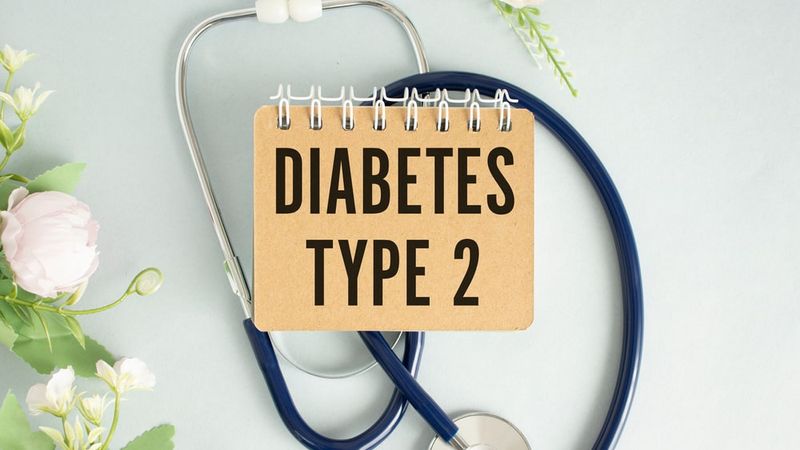

Our Review Process
Our articles undergo extensive medical review by board-certified practitioners to confirm that all factual inferences with respect to medical conditions, symptoms, treatments, and protocols are legitimate, canonical, and adhere to current guidelines and the latest discoveries. Read more.
Our Editorial Team
Shifa Fatima, MSc.
Author
Dr. Apoorva T, MHM.
MEDICAL ADVISOR
Everything You Need to Know- Type 2 Diabetes Mellitus
The statistics are concerning! Why are so many individuals; even the young ones developing Diabetes sooner in life than expected? The answer is simple yet overwhelming. According to reports, every 10th person you know is at risk of developing diabetes or has already developed it. Of all these diabetics, 90-95% have type 2 diabetes, and the rest have type 1 diabetes. T2 diabetes is a major chronic condition, and on top of that, it is associated with various comorbid diseases leading to multiple organ dysfunctions, consequently affecting your Quality of Life. But lets start at the beginning.
Table of Contents
What is Type 2 Diabetes?
Type 2 Diabetes Mellitus or T2DM, is a chronic metabolic disorder characterized by increased glucose levels in your bloodstream. It is an impairment of the body’s functioning in regulating glucose intake from the food you eat. Eventually, it affects almost all the body organs, resulting in their malfunctioning, predominantly eyes, kidney, and nervous system. Usually, the onset of T2DM happens in adult age; however, with the modern lifestyle kicking in, even children and younger populations are at risk or are developing it. Know about medications for diabetes.
What Causes Type 2 Diabetes?
Type 2 diabetes is a condition that primarily occurs during adulthood in most people. Since it is mainly a lifestyle-related aspect, one of the major reasons why it can affect a person would be an unhealthy lifestyle and diet. As people grow older, their bodies go through several hormonal changes as well which can also cause them to not follow a healthy diet. Type 2 diabetes symptoms occur when one eats a lot of junk food, has no control over their diet, indulges in alcohol and smoking, has an irregular sleeping pattern, etc. Stress is also a huge factor in causing T2D.
Two interrelated conditions usually cause T2DM
- Your body is not producing enough insulin due to decreased functioning or damage of beta-cells of the pancreas.
- Cells in your body become non-responsive or resistant to insulin (known as insulin resistance) and decreased insulin sensitivity.
Both these conditions lead to uncontrolled blood glucose levels for extended periods resulting in further damage in cellular functioning. Biologically, there are a few points that can be kept in mind. These factors are often beyond human control as they are related to genetics, hormones, and bodily functions. Type 2 diabetes may be caused by a combination of factors:
- Being overweight or having obesity
- Not being physically active
- Insulin resistance – The cells in the body become resistant to insulin which makes it difficult to optimally use the insulin molecules to bind to the glucose molecules in the bloodstream. This causes high blood sugar and may result in T2D
- Lack of production – Another reason could be that the islet cells in the pancreas do not produce insulin at all (or very little)
- Autoimmune – This condition occurs wherein the unhealthy cells of the body attack the healthy cells of the body rendering them ineffective. In diabetes, this happens within the pancreas
- Genetic predisposition – Some people have a higher genetic predisposition to diabetes due to hereditary factors.
Read more about the cause of diabetes and it's symptoms
Type 2 Diabetes Symptoms?
Type 2 diabetes mellitus is a disorder that slowly affects your body while you are unaware of it due to the mild nature of the symptoms. T2 diabetes affects multiple organs, and usually, a chain of signs and symptoms start to appear, which become severe with the progression of the disorder.
Early Type 2 diabetes signs and symptoms can include-
- Fatigue
- Loss of weight
- Increased thirst
- Constant hunger
- Increased frequency of urination
- Low energy levels
- Skin itches
- Dry mouth
- Blurry vision
Symptoms worsen and become serious and noteworthy as the disease progresses. High blood levels for extended periods can lead to one or more of the following symptoms-
- Yeast and other frequent infection
- Slow healing of wounds, cuts, or sores
- Acanthosis Nigricans (dark patches on the skin, usually in armpits and neck)
- Neuropathy characterized by numbness in the extremities
If you develop two or more of these symptoms, you should consult a doctor. Early diagnosis of Type 2 diabetes can help to mitigate the disease and associated complications. Also know about random blood sugar normal range.
Read more about how to prevent diabetes

Type 2 Diabetes Risk Factors & Red Flags
Red flags are the factors that may increase the risk of developing Type 2 diabetes:
- Weight and fat distribution: Obesity or being overweight is a major risk factor. Fat distribution and waist circumference are critical to estimate belly fat which is a strong risk factor for T2 diabetes. Waist circumference less than 40 inches in males and less than 35 inches in females are considered healthy.
- Physical inactivity: Physical activity helps you to utilize glucose and keep cells sensitive to insulin. Some activity is better than no activity. Even doing household chores for extended durations has shown to significantly reduce blood glucose levels.
- Family history or genetic disposition: Family history of T2 diabetes increased the risk of developing diabetes in the offspring. Genetic disposition and ethnicity/race of individuals also play an important role in making few populations more susceptible to diabetes; examples include Blacks and Asians.
- Blood lipid levels: The risk of T2 diabetes increases in individuals having high levels of triglycerides and low levels of high-density lipoproteins.
- Prediabetes: People with higher blood glucose levels than normal, but not enough to be characterized as diabetes have prediabetes. They are more prone to develop diabetes at some point in their lifetime if untreated. Know about pre diabetes levels.
- Pregnancy: Females who develop gestational diabetes or give birth to a baby weighing more than 4 Kg are also at risk to develop T2 diabetes at later stages.
- Polycystic ovary syndrome (PCOS): Females with PCOS, characterized by obesity, excess hair growth, and irregular menstrual cycle, are at increased risk of developing T2 diabetes.
Type 2 Diabetes Complications
Type 2 diabetes is associated with multiple conditions affecting major body organs, including blood vessels, heart, kidneys, nervous system, and eyes. The major complications associated with uncontrolled diabetes include:
- Heart disease, stroke, and narrowing of blood vessels
- Neuropathy and nerve damage
- Chronic kidney disease
- Retinopathy or blindness
- Bacterial and fungal infections
- Slow healing
- Hearing impairment
- Dementia
Type 2 Diabetes Diagnosis
Diagnosis is typically based on the measurement of blood glucose levels. Blood samples can be collected during fasting or after eating food or randomly to assess if levels are beyond the limits. Your doctor might ask you to go for an A1C (glycated haemoglobin) test to confirm the diagnosis. Know about gestational diabetes treatment.
Type 2 Diabetes Management
Type 2 diabetes is predominantly treated with a range of oral anti-diabetic medications. Your doctor can also advise you to adopt lifestyle changes along with medicine to get better results. When the oral medications and the lifestyle changes are ineffective to control blood glucose levels, you might need insulin. Also know about reversing type 2 diabetes.
Type 2 Diabetes Prevention
By and large, Type 2 diabetes is preventable if you are aware of the various aspects of the disease. Prevention typically includes adapting to healthy lifestyle habits, including but not limited to:
- Eating healthy: Eating right with a good balance of carbohydrates, fats, and proteins is very important to control blood glucose levels. You should aim to reduce processed and complex foods and increase the consumption of foods rich in fibre and nutrients.
- Exercise daily: Exercising daily is the key to keep insulin resistance at bay. Exercise helps you to burn excess fat and to reduce blood glucose levels. You should aim to do at least 2.5 hours of moderate to vigorous exercise or activity per week.
- Weight management: Managing a healthy weight is the key to stay ahead of the disease, and it’s equally important for individuals with prediabetes.
- Avoiding a sedentary lifestyle: You should aim to reduce your sitting time and go for a walk more often, take stairs, and get involved in household chores. Also know about sugar in urine test.
Bottom Line
Type 2 diabetes mellitus is a disorder associated with severe complications and can potentially affect all the vital organs, including the heart, kidney, brain, and eyes. The risk of these complications further increases if you have a family history or have any comorbid condition. You can avoid these complications by monitoring your blood glucose levels, taking proper medication, adding healthy lifestyle habits to your routine. Also know about fasting blood sugar level.
You are your own Boss
So Rise and Shine! Get active, boost your metabolism, and beat this metabolic disorder by following a dedicated diet control regime, exercise, and weight management. Further, you should seek regular medical opinion for the latest updates to effectively manage Type 2 diabetes. Also know how to reverse prediabetes.
FAQs
1. What happens if you don't treat diabetes type 2?
This condition primarily needs to be managed lifelong. In some cases, T2D can also be majorly reversed with proper diet control and exercise. If one does not take efforts to treat/manage their symptoms it can lead to several long-term complications and uncontrolled sugar levels (and HbA1c)
2. Can type 2 diabetes be reversed?
In many cases, if the person engages in proper medication, regular exercise, strict control over diet, drinks a lot of water, and manages their stress levels, they can see a drastic change in their overall blood sugar levels. Sometimes, the need to take external insulin is also eliminated. Also know about ayurvedic medicine for diabetes.
3. What is normal blood sugar by age?
- For kids, the normal blood sugars can range as wide as 80 to 200 mg/dL
For adolescents, the range is between 80 to 180 mg/dL - For teens with a high activity level, 70-150
- In adults, the optimal range should be 10-150
- In the older generation, the range is wide again between 70-180
4. When to see a doctor?
Visit a doctor when you first notice the unusual symptoms like frequent thirst, urination, palpitations, etc. Post the diagnosis, it would be important to visit the doctor at least once in 3 months with your HbA1c report for a proper and thorough check-up. Additionally, when you feel that there are multiple and frequent highs or lows that are seemingly unmanageable, you can also visit your endocrinologist then.
5. What is the role of Insulin in type 2 diabetes?
The role of insulin is an important one in any type of diabetes. Essentially, what insulin does is that it binds to the excess sugar molecules in the bloodstream thus maintaining the optimal level of sugars. This helps to keep the blood glucose range in check.
6. What is the role of glucose in type 2 diabetes?
When we eat any type of food, the carbs in the food are broken down as glucose molecules in the blood to be used as energy for the muscles. When there is insulin resistance or lack of production of insulin in the body, these glucose molecules are not used up and therefore remain in the blood and urine. This results in type 2 diabetes. Also read about glucose in urine
Disclaimer
This website's content is provided only for educational reasons and is not meant to be a replacement for professional medical advice. Due to individual differences, the reader should contact their physician to decide whether the material is applicable to their case.
More by Shifa Fathima

अर्जुनरिष्ट: फायदे, खुराक, नुकसान | पढ़ें | Sugar.fit

मधुमेह के लिए मधुनाशिनी वटी: उपयोग, लाभ, खुराक और दुष्प्रभाव|

मधुमेह को नियंत्रित करें भारतीय आहार से





